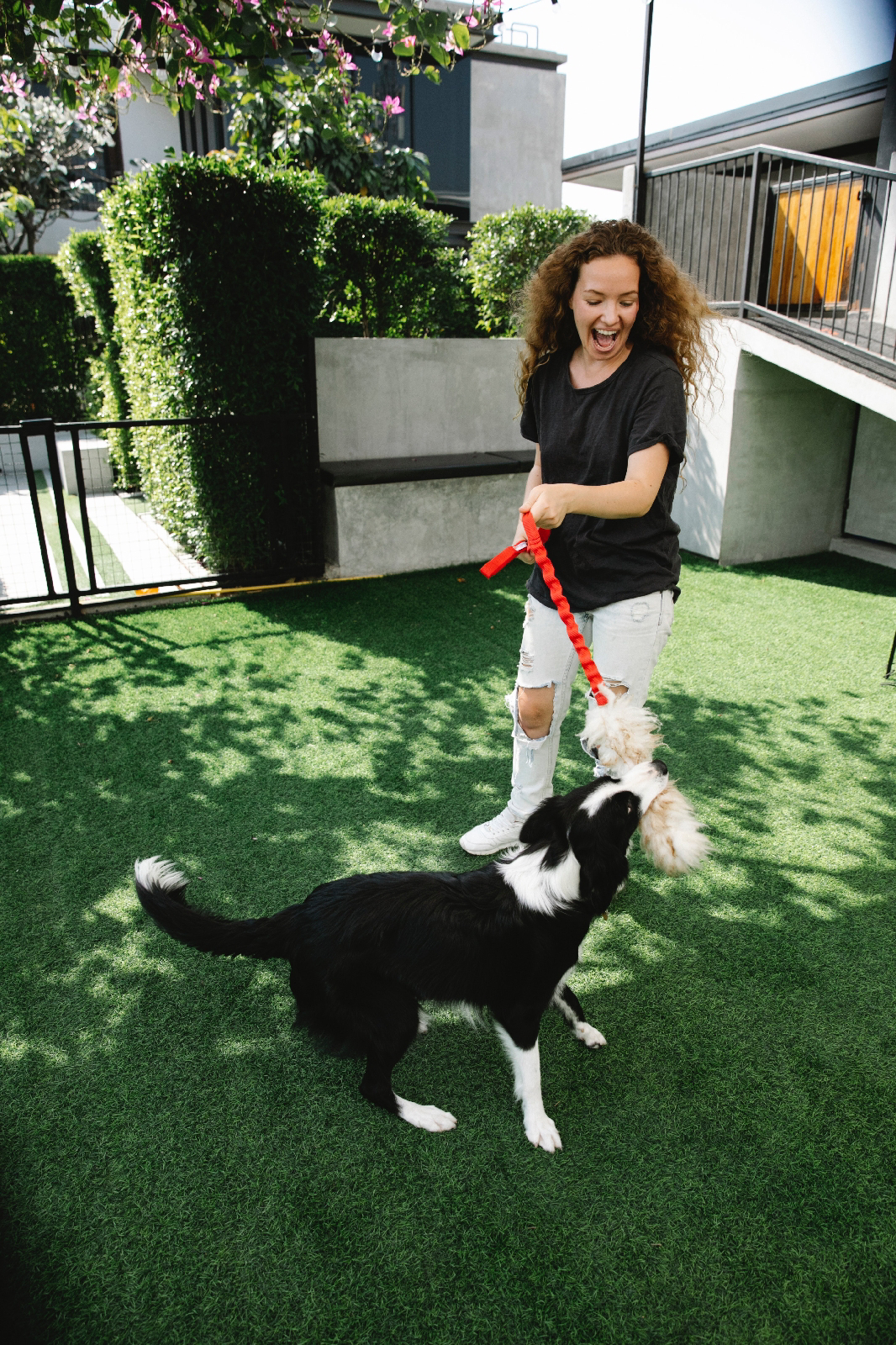How to house-train your dog or puppy
House-training your dog or puppy requires patience, commitment and lots of consistency. Accidents are part of the process, but if you follow these basic house-training guidelines, you can get the newest member of your family on the right track in a few weeks’ time.
Establish a routine
➡ Like infants, young doggies do best on a normal timetable.The timetable instructs them that there are times to eat, times to play and times to do their business.As a rule, a pup can handle their bladder one hour for each period old enough.So if your doggy is two months old, they can hold it for around two hours.Try not to go longer than this between restroom breaks or they're ensured to have a mishap.
Take your puppy outside frequently—
essentially like clockwork—and following they awaken, during and subsequent to playing, and in the wake of eating or drinking.
Pick a bathroom spot outside, and always take your puppy (on a leash) to that spot.
While your pup is assuaging themselves, utilize a particular word or expression that you can ultimately use before they go to remind them what to do. Take them out for a more extended walk or some recess solely after they have wiped out.
Reward your puppy every time they eliminate outdoors. Commendation or give treats—yet make sure to do as such following they've completed, not after they return inside.This progression is essential, in light of the fact that remunerating your canine for going outside is the best way to show what's generally anticipated of them. Before rewarding, be sure they’re finished. Puppies are easily distracted and if you praise too soon, they may forget to finish until they’re back in the house.
Put your puppy on a regular feeding schedule. What goes into a pup on a timetable emerges from a little dog on a timetable.Depending on their age, puppies usually need to be fed three or four times a day.Taking care of your little dog at similar occasions every day will cause it almost certain that they'll to wipe out at reliable occasions too, making house-preparing simpler for both of you.
Pick up your puppy's water dish
around over two hours before sleep time to decrease the probability that they'll have to soothe themselves during the evening.
Most little dogs can rest for around seven hours without requiring a restroom break.On the off chance that your little dog awakens you in the evening, don't overemphasize it; else they will think the time has come to play and will not have any desire to return to rest.Turn on as few lights as possible, don't talk to or play with your puppy, take them out and then return them to bed.
Supervise your puppy
Don't give your puppy an opportunity to soil in the house; keep an eye on them whenever they’re indoors.
Tether your puppy to you or a nearby piece of furniture with a six-foot leash if you are not actively training or playing.Watch for signs that your doggy needs to go out. A few signs are self-evident, for example, yelping or scratching at the entryway, hunching down, fretfulness, sniffing around or orbiting.At the point when you see these signs, promptly get the chain and take them outside to their restroom spot. On the off chance that they take out, acclaim them and award with a treat.
Keep your puppy on leash in the yard.
➡ During the house-preparing measure, your yard ought to be dealt with like some other room in your home. Give your little dog some opportunity in the house and yard solely after they become dependably house-prepared.
When you can't supervise, confine
At the point when you can't watch your doggy consistently, confine them to a space little enough that they will not have any desire to dispense with there.
Make plans for when you're away
If you have to be away from home more than four or five hours a day, this may not be the best time for you to get a puppy. Instead, you may want to consider an older dog who can wait for your return. If you already have a puppy and must be away for long periods of time, you'll need to:
■ Mastermind somebody, like a capable neighbor or an expert pet sitter, to take them for restroom breaks.
■ Then again, train them to dispose of in a particular spot inside. Know, notwithstanding, that doing this can drag out the cycle of housetraining. Training your pup to kill on paper may make a long lasting surface inclination, implying that even as a grown-up they may dispose of on any paper lying around the lounge.
■ On the off chance that you intend to paper-train, restrict them to a space with adequate space for a dozing space, a playing space and a different spot to dispose of. In the assigned disposal region, use either papers (cover the region with a few layers of paper) or a turf box. To make a turf box, place grass in a holder like a kid's little, plastic pool. You can likewise discover canine litter items at a pet stockpile store.
■ In the event that you need to tidy up a mishap outside the assigned end region, put the filthy clothes or paper towels inside it a while later to assist your pup with perceiving the scented region as where they should take out.
If you want learn easiest way..then



























